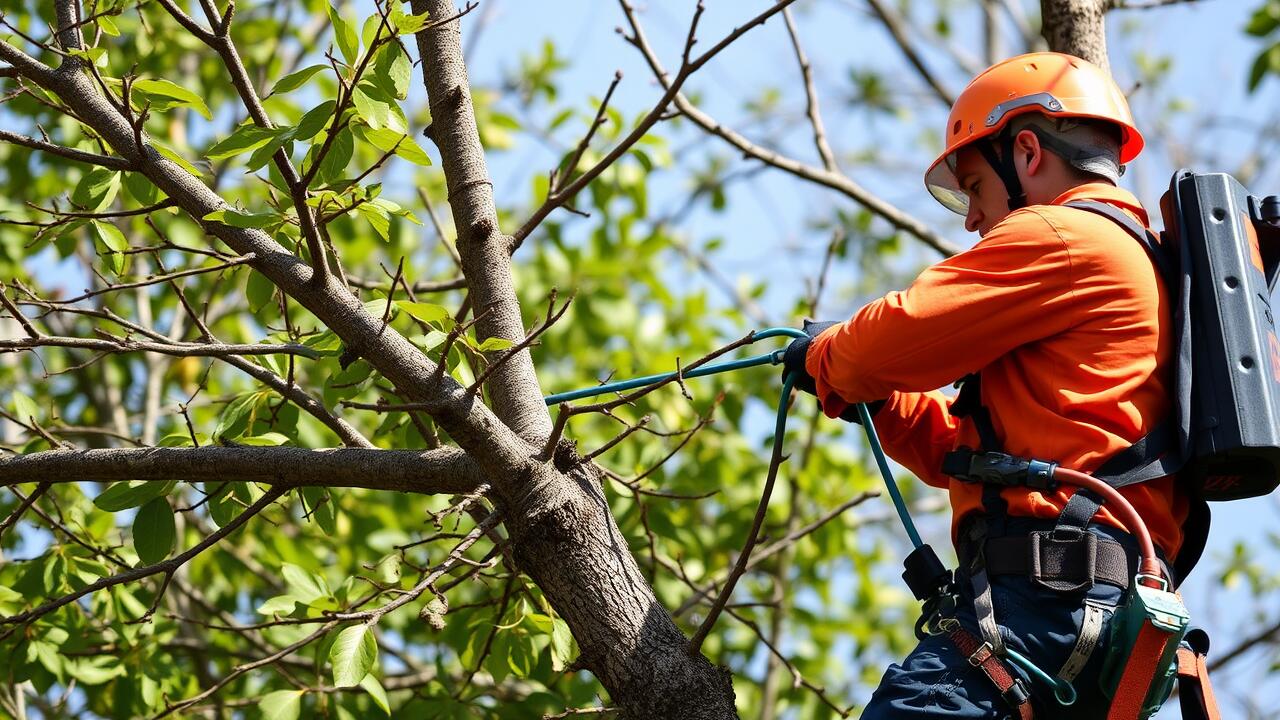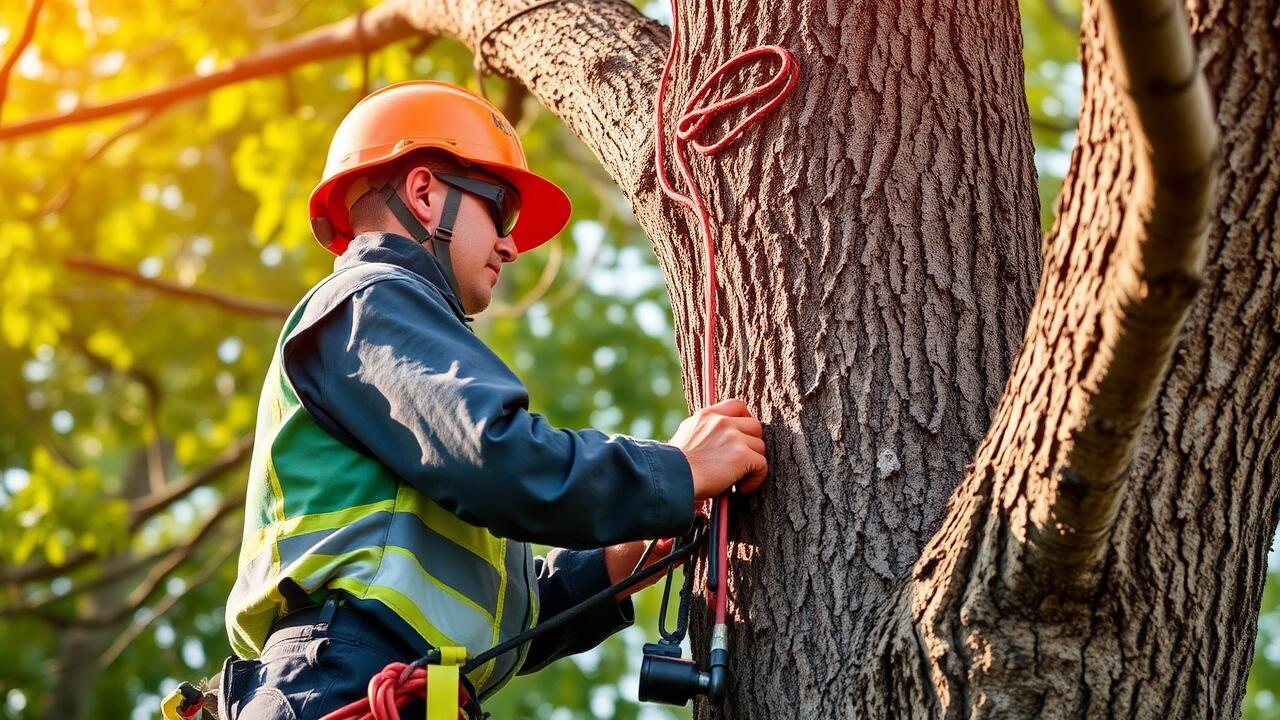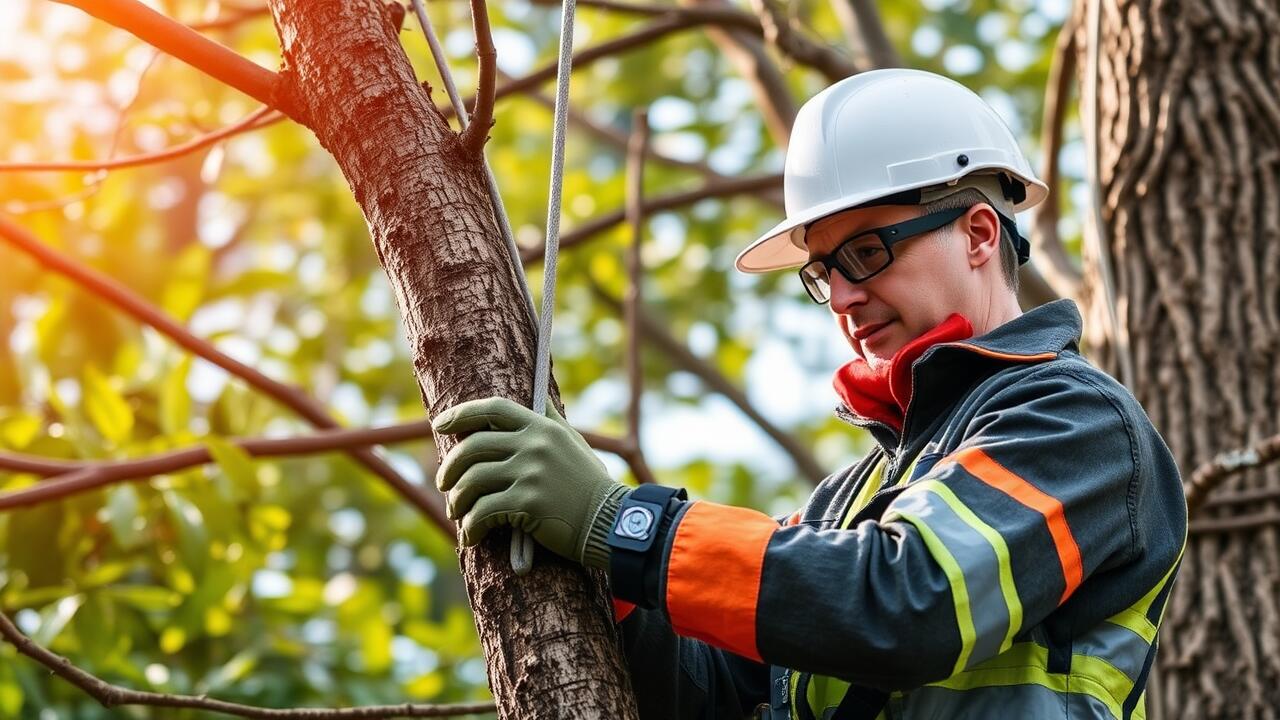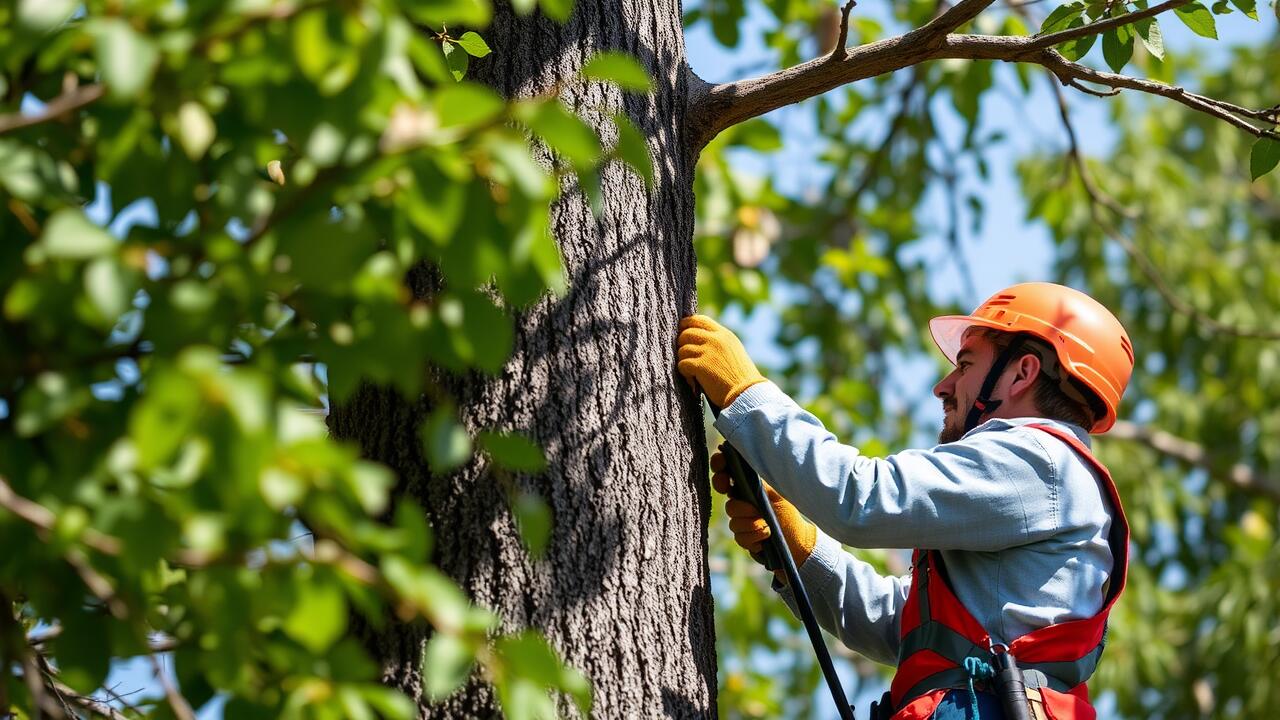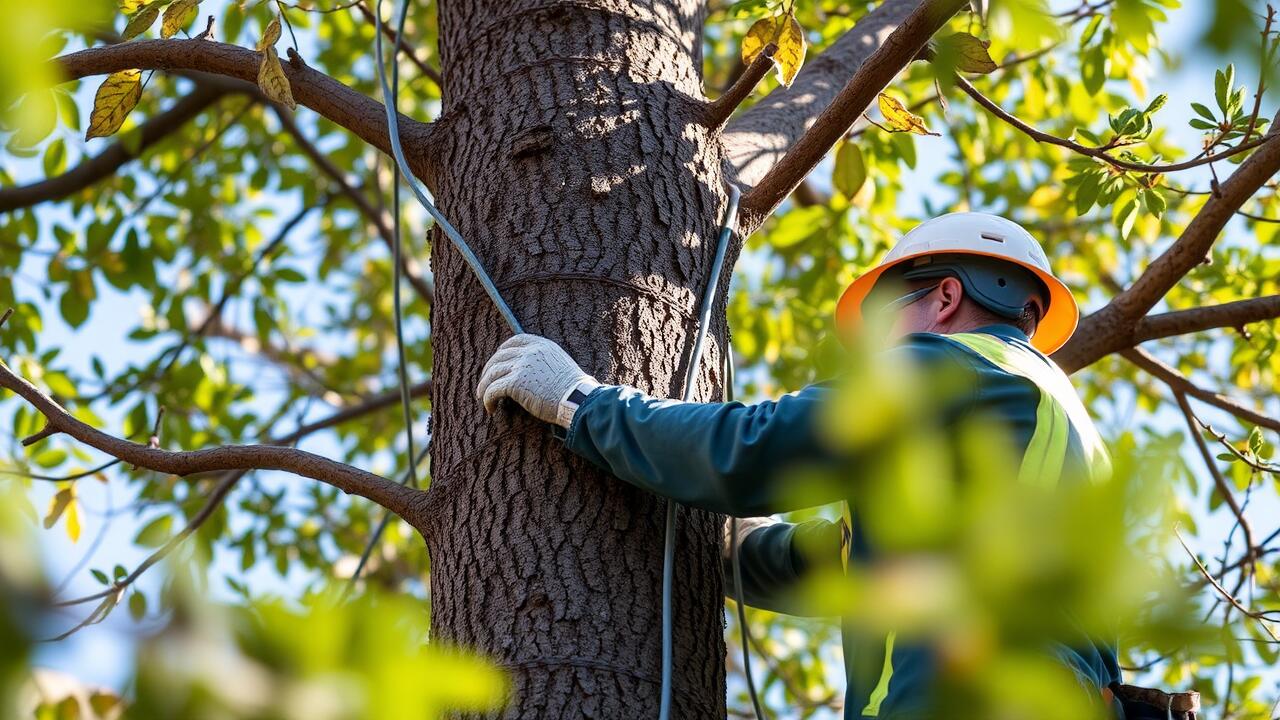
Installation Process of Tree Cabling
The installation process of tree cabling involves several key steps to ensure the tree receives adequate support while minimizing any stress on its structure. Initially, professionals will conduct a thorough assessment of the tree's health, size, and species to determine the best cabling method. Once proper planning is established, the next phase involves selecting the appropriate materials, such as cables and anchors, that suit the tree's specific needs. A careful installation requires drilling holes and attaching hardware in a way that enhances tree stability without compromising its growth.
Once the necessary equipment is in place, the cables are carefully threaded and secured in a way that allows for movement while providing reinforcement against wind or heavy snowfall. Regular checks during the installation phase help ensure the integrity of the cabling system. Homeowners searching for "Tree Cabling and Bracing near me" can expect that professionals will keep them informed about the progress and any specific considerations for their tree's future health.
Steps Taken by Professionals
Tree cabling and bracing require a careful approach, usually carried out by certified professionals. They begin by assessing the tree's health, structure, and environment to determine the best strategy. This evaluation includes checking for any damage, decay, or structural weaknesses that could affect the integrity of the cabling system. Professionals will then select appropriate materials and tools designed for tree support, ensuring they align with the specific needs of the tree species and local climate conditions.
After the assessment, the installation process involves securely attaching cables or braces to the tree using specialized hardware. This may include the use of protective padding to safeguard the bark and ensure that the cables do not cause further damage over time. The professionals ensure that the tension is adequately adjusted, allowing for natural movement while providing critical support. Proper installation is vital for the long-term stability of cabled trees, and many professionals advertise services such as "Tree Cabling and Bracing near me" for those seeking assistance.
Maintenance for Cabled Trees
Maintaining cabled trees is essential for ensuring their stability and health over time. Regular inspections should be conducted to check the integrity of the cables, looking for signs of wear or damage. Any fraying or rust on hardware should be addressed immediately to prevent potential failure. Additionally, monitoring the tree’s health, including checking for disease or insect infestations, is vital. A well-cared-for tree will better withstand environmental pressures.
Routine maintenance not only involves inspections but also periodic adjustments of the cabling system. As trees grow, the cabling may need to be repositioned or tightened to accommodate new growth. Engaging professionals who specialize in tree cabling and bracing near me can further ensure that the trees remain safe and well-supported. These experts bring knowledge and experience, making maintenance procedures efficient and effective, ultimately contributing to the tree's longevity.
Regular Inspections and Care
Regular inspections and care are essential for the longevity and effectiveness of tree cabling systems. Professionals typically recommend checking the cables for any signs of wear, rust, or loosening. It is crucial to ensure that the hardware is performing as intended to prevent any potential failures that could harm the tree or surrounding structures. Scheduling these inspections at least once a year can help maintain the health of the tree and the integrity of the cabling system.
In addition to regular inspections, proper maintenance practices should be applied. This includes cleaning around the cable and bracing points to avoid any accumulation of debris, which might lead to moisture retention and subsequent decay. Homeowners might find it beneficial to search for “Tree Cabling and Bracing near me” for local professionals who can provide these services. Ensuring that trees remain healthy and well-supported requires vigilance and proactive care.
Alternatives to Tree Cabling
When tree cabling does not seem like the best solution for a particular situation, several alternatives can provide support and stability. Ground anchors, for example, offer a way to stabilize trees that may be leaning or have compromised root systems. These anchors can be installed at an angle, helping to secure the tree while minimizing disruption to the surrounding area. Additionally, using specially designed tree supports can provide a more natural-looking means of aiding weakened branches or trunks without the need for cabling.
Another option is pruning to reduce weight and improve balance. Properly executed pruning techniques can alleviate stress on tree structures and help maintain their overall health. Some property owners may also consider consulting with local arborists for professional assessments and recommendations. This ensures that the chosen method is well-suited for the specific tree species and its condition. Searches for "Tree Cabling and Bracing near me" typically lead to a variety of resources, including experts who can suggest the most effective support alternatives.
Other Methods of Tree Support
Tree support options extend beyond cabling methods. For those seeking alternatives, one prominent choice is the use of props or bracing rods that can provide extra support to the branches. These rods lend stability without causing the level of stress that may be associated with cabling. Proper installation is crucial, requiring careful consideration of the tree’s growth patterns and overall health.
Another popular option is the use of ground anchors. These serve as a secure way to stabilize trees that have a tendency to lean or are at risk of being uprooted. When searching for “Tree Cabling and Bracing near me,” considering these alternatives can lead to a more tailored approach in ensuring a tree remains healthy and stable. Each method has its own set of advantages, making it essential to evaluate based on specific tree conditions and local environmental factors.
FAQS
What is tree cabling?
Tree cabling is a technique used to support weak or damaged branches of a tree by installing cables to reduce stress and improve structural integrity.
How is tree cabling installed?
The installation process typically involves assessing the tree’s condition, selecting appropriate anchors, and securely fastening cables to both the tree and the chosen support structures.
How often should cabled trees be inspected?
Cabled trees should be inspected at least once a year, or more frequently after severe weather events, to ensure that the cables and tree are in good condition and that no additional support is needed.
Are there alternatives to tree cabling?
Yes, alternatives to tree cabling include methods such as tree bracing, pruning, and using tree supports like props or stakes to provide additional stability.
Can tree cabling harm the tree?
If not done properly, tree cabling can potentially harm the tree by causing wounds or restricting growth. It is important to have a professional assess the tree and perform the installation to minimize any risks.
